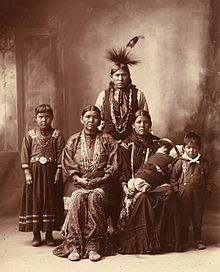သ္ၚိကၟိန်
နကဵု ဝေါဟာရ ပရေင်မၞိဟ်မ္ဂး သ္ၚိကၟိန် ဂှ် ဂွံအဓိပ္ပါယ် ဂကောံမၞိဟ် မဆက်စပ် ရေင်သကအ် နကဵု မစၟတ်သမ္တီ မၜံင်သၠး ဟွံသေင်မ္ဂး နကဵု မသၞက်ကရောဲ (ထပ်တဲကီု သီုကဵု စၟတ်သမ္တီ နဒဒှ် သမ္ဘာ ကဵုတၠသ္ၚိ) တအ်ရ။ တင်ရန်တၟအ် သ္ၚိကၟိန်ဂှ် သွက်ဂွံမင်မဲ ကောန်ဂကောံ ဂကောံမၞိဟ်ဇကု ခိုဟ်ဟ်တအ်ရ။ နကဵုလညာတ်မ္ဂး သ္ၚိကၟိန်တအ်ဂှ် သွက်ဂွံမင်မဲ ထ္ၜလဘာ် ကဵု ပရေင်ဂီုကၠီု ၜိုဟ်သြိုဟ် ရေင်သကအ်ရ။[၁]ပ္ဍဲကဵု ဂကောံမၞိဟ် ဗွဲမဂၠိုင် ကောန်ၚာ်တအ်ဂှ် ဗတောန်ကေတ် ဒ္ဂေတ်ပြဝကောန်မၞိဟ် သွက်ဘဝ နူကဵု မ္ၚးဂကောံသ္ၚိကၟိန်ဇကုရ။ ညံင်ရဴ ဂကောံမွဲမွဲ ဂွံပကောံဓရီု ဂွံတန်တဴဂွံဂှ် အောန်အိုတ် နွံပၟိက် ကောန်ဂကောံ၊ ပယျဵုဓနက် ညးလဵု မဒှ်ကောန်ဂကောံ၊ လညာတ်သမ္တီ အရာလဵုမဒးကၠောန် ကေုာံ အရာလဵု မဒးဆက်စၠောအ် ကၠောန်အာတအ် ဒးနွံရ။ သ္ၚိကၟိန်လေဝ် ညံင်ရဴသာ်ဂှ်ကီုရ။ ဒးနွံကဵု ဂကောံမၞိဟ်၊ မၞိဟ်ဗီုလဵု မကော်ခဴစ ကောန်ဂကောံ သ္ၚိကၟိန်ဇကု၊ ဒှ်ကောန်ဂကောံသ္ၚိဟီုဂှ် မုအရာမသ္ဂး အရာလဵု မဆက်စၠောအ်မင်မဲအာ အခိုက်ကၞာကောန်မၞိဟ် ပ္ဍဲဂကောံသ္ၚိကၟိန်ဇကုတအ် ဒးနွံကီုရ။
တၠပညာမနုဿဗေဒတအ် ဗွဲမဂၠိုင် စၟတ်သမ္တီ ကောန်ဂကောံ သ္ၚိကၟိန် နွံနာနာသာ်ဂှ် ဂကောံသ္ၚိကၟိန် မာတာသကိုပ်သက (matrifocal) မိ ကေုာံ ကောန်ဇာတ်တအ် ဒှ်သ္ၚိကၟိန်၊ ပိတာသကိုပ်သက (patrifocal) အပါ ကေုာံ ကောန်ဇာတ် ဒှ်သ္ၚိကၟိန်၊ ဒွန်သကိုပ်သက (conjugal) သမ္ဘာ၊ တၠသ္ၚိ ကေုာံ ကောန်ၚာ် ဒှ်သ္ၚိကၟိန်၊ သဳမူသကိုပ်သက (avuncular) မိနော် အပါနော် ကော ၝောဲ ဒေအ် ကေုာံ ကောန်ၝောဲ ကောန်ဒေအ်တအ်ဂှ် ပါလုပ်လၟိဟ် ပ္ဍဲဂကောံသ္ၚိကၟိန်ရ။
ကောန်ဂကောံ သ္ၚိကၟိန်မကြပ်ညောန် (immediate family) ဂှ် နွံကဵု သမ္ဘာတၠသ္ၚိ၊ မိမ၊ မိနော်အပါနော်၊ ကော၊ ၝောဲ၊ ဒေအ်၊ ကောန်ဇာတ်ဂမၠိုင် ရ။ ကောန်ဂကောံ သ္ၚိကၟိန်သမၠဲ (extended family) ဂှ် ပါဲနူ ဂကောံသ္ၚိကၟိန်မကြပ်ညောန်တအ်တုဲ ထပ်သမၠဲပ္တိတ် သဳ (aunt)၊ မူ (uncle)၊ ကောန်မေန် (cousin and nephew)၊ ကောန်ၝောဲကောန်ဒေအ် (cousin)၊ သမ္ဘာ/တၠသ္ၚိ ကောန်ၝောဲကောန်ဒေအ် (siblings-in-law) တအ်ရ။ လဆောဝ်မ္ဂး ဂကောံ သ္ၚိကၟိန်မကြပ်ညောန် တအ်လေဝ် ဟွံတုပ် ရေင်သကအ်ရ၊ တန်တဴဒၟံင် ဗီုလဵု ပရေင်ဆက်စၠောအ် ကၠောအ်က္ဍ ရေင်သကအ် ပ္ဍဲဂကောံ သ္ၚိကၟိန်ဂှ်ရ။ နကဵု သၞောဝ်လေဝ် သ္ၚိကၟိန်မကြပ်ညောန် ဂှ် ဗၟံက်ထ္ၜးလဝ် ဟွံတုပ်ရ။[၂]ပရေင်ဆက်ဆောံလိင် အပ္ဍဲဂကောံသ္ၚိကၟိန်တအ်ဂှ် ဍုင်ဗွဲမဂၠိုင် ကၟာတ်လဒဵုလဝ် နကဵုသၞောဝ် (incest)၊ ကေုာံ ညးဍုင်ကွာန် ဟွံဒးဂၞပ်ရ။
ကွတ်ပညာ မလ္ၚတ် တၞောဝ် ဒတောဝ်ဗဳဇဂှ် ညးကော်စ ဗဳဇဗေဒ (genealogy) ရ။ သ္ၚိကၟိန်ဏအ်ဂှ် နကဵုပရေင်ပိုန်ဒြပ်လေဝ် ဒှ်အရာအဓိကမွဲကီုတုဲ မအရေဝ် "သ္ၚိကၟိန်" ဂှ် နဒဒှ် ဥပစာလင်္ကာ မဟီုဂး သွက်ပရေင်ကောံသၟဟ်၊ မွဲဍုင်၊ မွဲဂကူ၊ မွဲဇာတ်မၞိဟ်လေဝ် နွံကီုရ။
ပရေင်မၞိဟ်
[ပလေဝ်ဒါန် | ပလေဝ်ဒါန် တမ်ကၞက်]

အရာအဓိက သ္ၚိကၟိန်ဂှ် သွက်ဂွံပတိတ် ကေုာံ ကလေင်ပတိတ် မၞိဟ် နကဵုဇဳဝဗေဒကီု သီုကဵု နကဵုပရေင်မၞိဟ်ရ။ အရာတအ်ဏအ် ကတဵုဒှ်ကၠုင် နကဵု မပါ်ပရအ် ကပေါတ်အရပ်အရာ မပ္တံကဵု စၞစအဟာရ၊ ပွမကဵု ကေုာံ ပွမဒုင်တဲ ပရေင်စဵုဒၞာဂီုကၠီု ပရေင်လွဳလွတ် ရေင်သကအ်၊ တုဲပၠန် ဒက်ဗစိုပ်လဝ် နကဵု အခေါင်အရာ မဆေင်ကဵု သၞောဝ်ဥပဒေ ကေုာံ ဒ္ဂေတ်ဝတ် လတူရေင်သကအ်တအ်ရ။[၄][၅] Thus, one's experience of one's family shifts over time. From the perspective of children, the family is a "family of orientation": the family serves to locate children socially and plays a major role in their enculturation and socialization.[၆] From the point of view of the parent(s), the family is a "family of procreation", the goal of which is to produce, enculturate and socialize children.[၇][၈] However, producing children is not the only function of the family; in societies with a sexual division of labor, marriage, and the resulting relationship between two people, it is necessary for the formation of an economically productive household.[၉][၁၀][၁၁]
Christopher Harris notes that the western conception of family is ambiguous and confused with the household, as revealed in the different contexts in which the word is used.[၁၂] Olivia Harris states this confusion is not accidental, but indicative of the familial ideology of capitalist, western countries that pass social legislation that insists members of a nuclear family should live together, and that those not so related should not live together; despite the ideological and legal pressures, a large percentage of families do not conform to the ideal nuclear family type.[၁၃]
နိဿဲ
[ပလေဝ်ဒါန် | ပလေဝ်ဒါန် တမ်ကၞက်]- ↑ (2010) An Introduction to Family Social Work. Brooks/Cole, Cengage Learning, 28–29. ISBN 978-0-495-80872-5။
- ↑ Immediate Family Law and Legal Definition | USLegal, Inc..
- ↑ Jás Elsner (2007). "The Changing Nature of Roman Art and the Art Historical Problem of Style," in Eva R. Hoffman (ed), Late Antique and Medieval Art of the Medieval World, 11–18. Oxford, Malden & Carlton: Blackwell Publishing. ISBN 978-1-4051-2071-5, p. 17, Figure 1.3 on p. 18.
- ↑ Schneider, David 1984 A Critique of the Study of Kinship. Ann Arbor: University of Michigan Press. p. 182
- ↑ Deleuze-Guattari (1972). Part 2, ch. 3, p. 80
- ↑ Russon, John, (2003) Human Experience: Philosophy, Neurosis, and the Elements of Everyday Life, Albany: State University of New York Press. pp. 61–68.
- ↑ George Peter Murdoch Social Structure p. 13
- ↑ (2009) Clinical Child Psychology. Delhi: Gyan Books, 113–115. ISBN 978-81-7835-761-4။
- ↑ Wolf, Eric. 1982 Europe and the People Without History. Berkeley: University of California Press. 92
- ↑ Harner, Michael 1975 "Scarcity, the Factors of Production, and Social Evolution," in Population, Ecology, and Social Evolution, Steven Polgar, ed. Mouton Publishers: the Hague.
- ↑ Rivière, Peter 1987 "Of Women, Men, and Manioc", Etnologiska Studier (38).
- ↑ "We have seen that people can refer to their relatives as 'the family.' 'All the family turned up for the funeral... But of course, my brother didn't bring his family along— they're much too young.' Here the reference is to the offspring (as distinct from 'all' the family). The neighbors were very good, too. 'The Jones came, and their two children. It was nice, the whole family turning up like that.' Here the usage is more restricted than 'relatives' or 'his relatives,' but includes just both parents and offspring. 'Of course, the children will be leaving home soon. It's always sad to see the family break up like that.' Here the reference is not only to parents and children but to their co-residence, that is, to the household."The Family and Industrial Society", 1983, George Allen Unwin, London, p. 30
- ↑ Olivia Harris. Of Marriage and the Market: Women's Subordination Internationally and its Lessons. London: Routeledge, 138။
